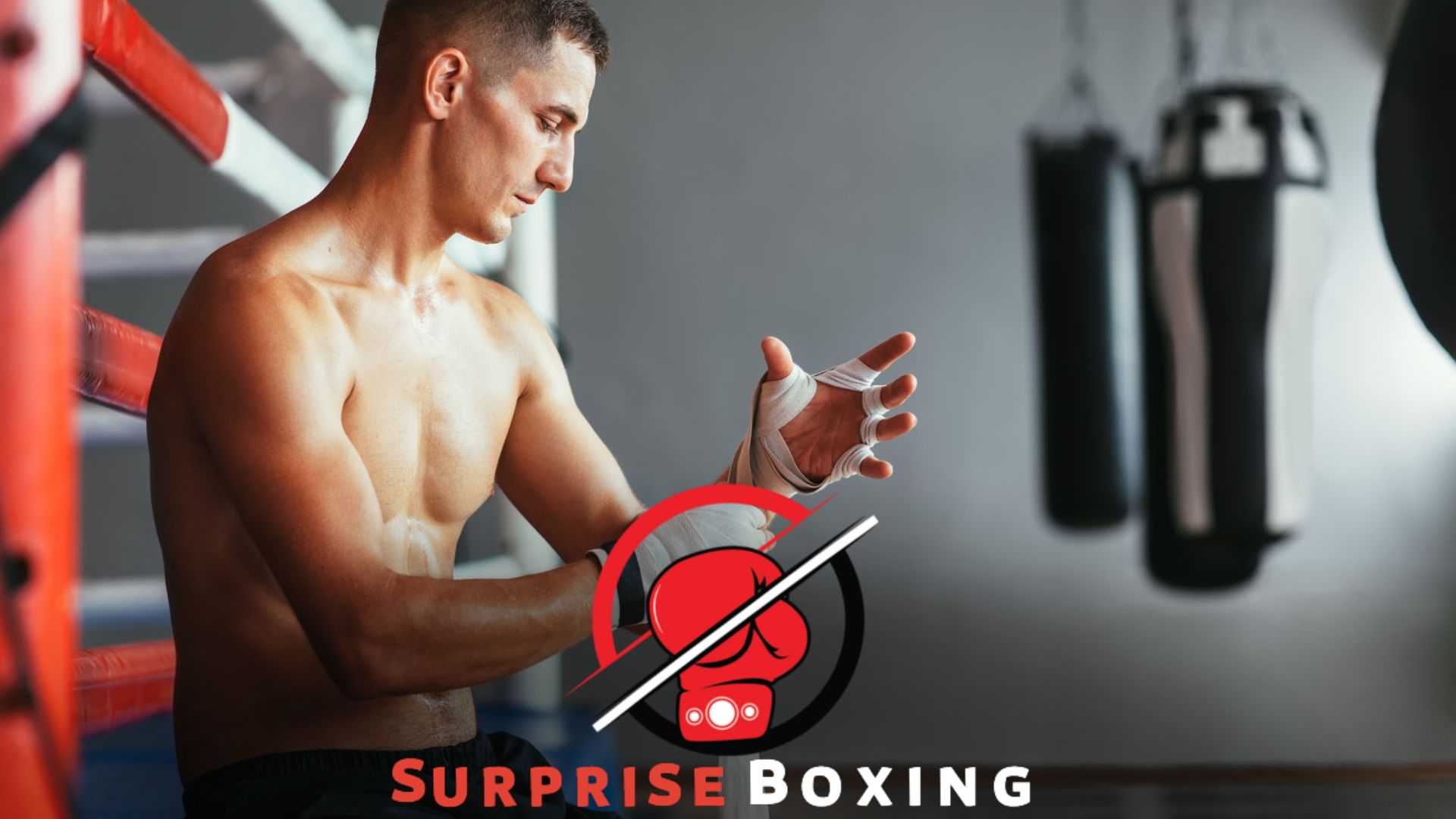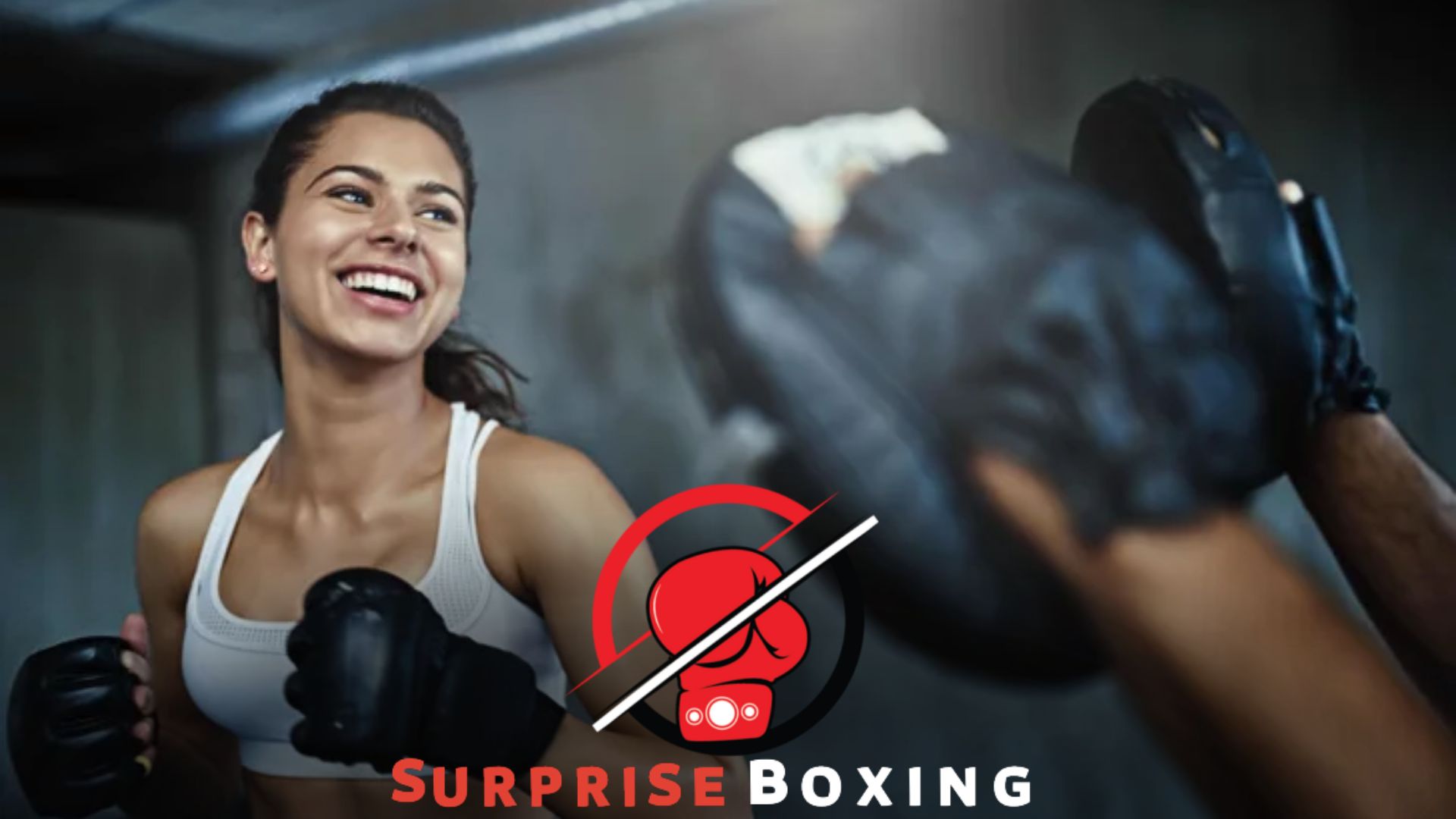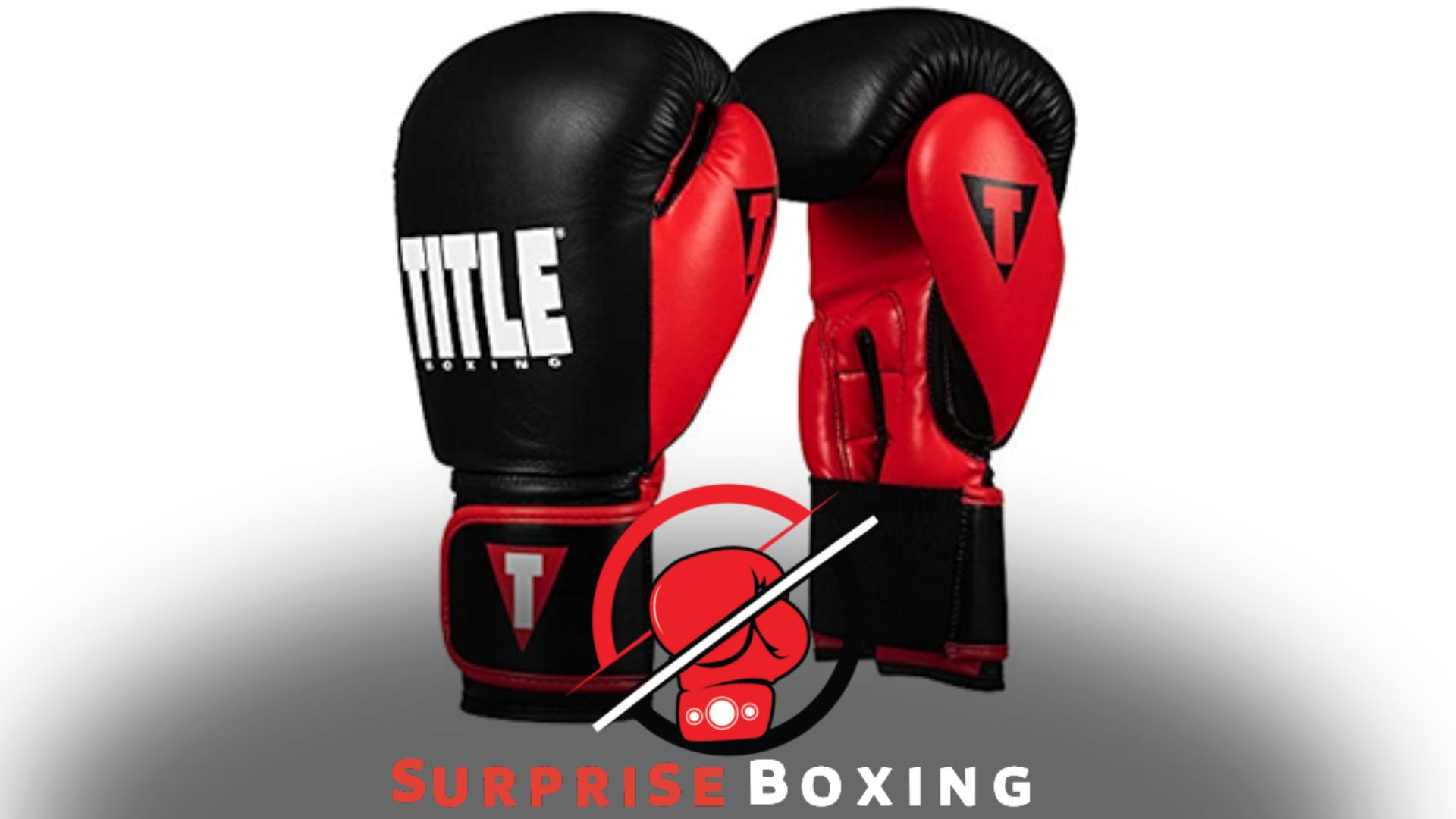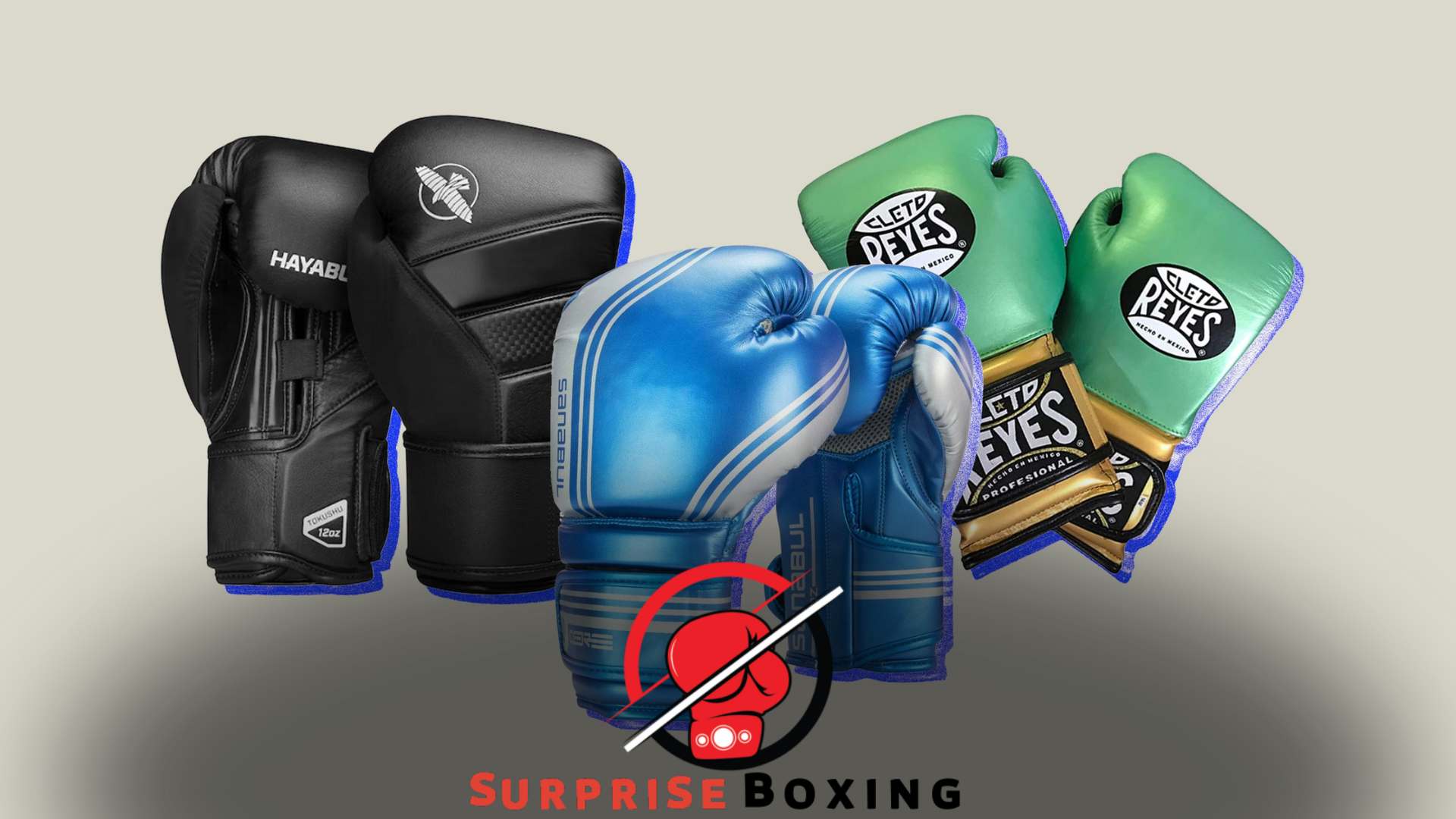Boxing gloves should fit snugly around the hand and wrist to provide proper support and protection during training or competitions. Boxing gloves are an essential piece of equipment for boxers, giving shelter to both the wearer and their opponent.
Ensuring a proper fit is crucial to maximize performance and minimize the risk of injury. When selecting boxing gloves, choosing a size that corresponds to your weight and hand size is essential. The gloves should fit snugly around the hand, with the fingertips reaching the top of the glove.
The wrist strap should be secure and adjustable to provide proper support. A well-fitting boxing glove will allow for natural hand movement while providing adequate padding to cushion punches. By following these guidelines, boxers can ensure a proper fit and enjoy the benefits of comfort, protection, and performance enhancement.
Step-By-Step Guide To Proper Glove Fitting: Ensuring Comfort, Safety, and Optimal Performance in Boxing Gloves

Finding suitable boxing gloves can make all the difference in your training sessions and competitions. Ill-fitting gloves can lead to discomfort, injury, and inefficient performance, so ensuring a proper fit is crucial. In this step-by-step guide, we will walk you through the process of fitting your boxing gloves, providing you with the comfort, safety, and optimal performance you need to excel in the ring.
Step 1: Measure Your Hand Size
Before purchasing boxing gloves, measuring your hand size accurately is essential. This step will give you a good starting point for finding the glove size that fits you best. To measure your hand size, follow these simple steps:
- Wrap a tape measure around your dominant hand just below the knuckles.
- Take note of the circumference in inches.
- Compare your measurements with the sizing chart provided by the glove manufacturer.
Step 2: Choosing the Right Glove Weight
The weight of the boxing gloves is another crucial factor to consider for a proper fit. Glove weights typically range from 8 to 20 ounces, each serving a specific purpose. Here’s a breakdown to help you choose the right glove weight:
- 8-10 oz: Generally used in competitive boxing matches for professional boxers.
- 12-14 oz: Suitable for general training, pad, and bag work.
- 16 oz: Ideal for sparring sessions and offers increased hand protection.
- 18-20 oz: Designed for heavy bag workouts and extra padding.
Step 3: Hand Wrapping
Hand wrapping is an essential step to take before putting on your boxing gloves. It provides additional support and protection and ensures a secure fit. Follow these steps to wrap your hands correctly:
- Start by surrounding the wrist area three to four times.
- Make a figure-eight motion around the back of your hand and between your fingers.
- Wrap your hand and knuckles securely, making sure not to restrict movement or blood flow.
- Finish by wrapping the wrist area again, creating a secure anchor point for the gloves.
Step 4: Putting on the Gloves
Now that your hands are properly wrapped, it’s time to wear gloves. Follow these steps to ensure a comfortable and secure fit:
- Gently slide your hand into the glove, spreading your fingers wide apart.
- Push your fingers into the glove until they fit snugly into each compartment.
- Adjust the velcro straps or laces to tighten the glove around your wrist, ensuring a secure fit without cutting off circulation.
Step 5: Check the Fit
After putting on the gloves, check the fit to ensure they fit correctly. Here are a few things to look out for:
- Your fingers should fit comfortably into each compartment without being too loose or cramped.
- The gloves should feel snug around your hand and wrist, providing support without restricting movement.
- Flex your hand and make a fist to ensure proper mobility and space within the glove.
Following this step-by-step guide, you can ensure that your boxing gloves fit correctly, providing the utmost comfort, safety, and optimal performance during training and competitions. Remember, a well-fitted glove can enhance performance, protect your hands, and prevent unnecessary injuries.
So, take the time to find the perfect fit and elevate your boxing game.
Finding the Right Size
- The size of boxing gloves is typically measured in ounces (oz), which refers to the weight of each glove. The right size for you depends on your body weight and intended use.
- Different gloves have different purposes, and the sizing may vary between brands, so always refer to the manufacturer’s size chart for accurate measurements.
- As a general guide, 8-10 oz gloves are suitable for competitive or professional boxing, while 12-16 oz gloves are recommended for training and sparring. Heavier gloves provide more padding and protection.
Ensuring A Snug Fit
- Your boxing gloves should fit snugly but not excessively tight. Proper fit allows you to control your punches while ensuring comfort and safety.
- The gloves should secure around your wrist and forearm with the closure strap and provide even padding over your hand.
- Pay attention to the thumb position; it should align closely with your fist to prevent injuries during impact.
Trying Them on
- Always try on boxing gloves before purchasing, if possible. This allows you to assess the gloves’ fit, comfort, and overall feel.
- Put on hand wraps or inserts you typically use during training to replicate the natural fit.
- Ensure enough space to wiggle your fingers inside the gloves without feeling tightness or discomfort.
Tips for Adjusting the Fit
- If the gloves are slightly loose, you can add padding through wrap techniques or specialized glove inserts.
- On the other hand, if the gloves feel tight, you can loosen the closure strap or consider getting a larger size.
Importance of Proper Fit
- Wearing gloves that fit correctly protects your hands and prevents injuries to your wrists, knuckles, and fingers.
- A snug fit contributes to better striking accuracy and power, allowing you to perform best during training or competitions.
Maintaining and Replacing Gloves
- Regularly inspect your gloves for any signs of wear or damage, such as loose stitching or padding that has started to flatten.
- Clean your gloves after each use to prevent odor and bacteria buildup. Follow the manufacturer’s instructions for cleaning and maintenance.
- Over time, the padding in gloves may deteriorate, affecting the level of protection provided. It is recommended to replace your gloves periodically to ensure optimal safety and performance.
Investing in a well-fitting pair of boxing gloves is essential for your performance, safety, and overall boxing experience. Take the time to research and find the gloves that best suit your needs, and always prioritize comfort, protection, and durability.
Factors Affecting Glove Fit: Understanding How Glove Construction, Hand Wrapping, and Design Impact the Fit of Boxing Gloves
Boxing gloves are essential to a boxer’s training and sparring sessions. A proper fit ensures safety, comfort, and optimal performance. This section will explore the key factors that impact glove fit: glove construction, hand wrapping, and design.
Glove Construction
- Glove weight: Different glove weights suit different purposes. Heavier gloves provide better hand protection, while lighter gloves offer more speed and agility.
- Padding density: The amount and thickness of padding affect both safety and comfort. High-density padding provides better shock absorption but may be less comfortable.
- Closure system: Different gloves employ various closure systems, such as velcro straps or lace-ups. The closure system affects the ease of adjusting and tightening the glove around the wrist.
Hand Wrapping
- Wrapping technique: Properly wrapping your hands is crucial for a secure and comfortable fit. It helps stabilize the joints, reduces the risk of injury, and ensures a snug glove fit.
- Wrapping materials: Choose high-quality hand wraps made of breathable and durable materials. They should provide adequate wrist support and padding for the knuckles.
Glove Design
- Thumb attachment: The thumb attachment can influence hand alignment and ergonomics. Some gloves have attached thumbs, restricting thumb movement, while others have separate thumbs, allowing more flexibility.
- Finger compartment: A glove with a snug finger compartment ensures proper gripping and control. It prevents your fingers from sliding inside the glove during punches and provides a better fit overall.
Finding the right boxing glove fit is essential for safety, comfort, and performance. Understanding the impact of glove construction, hand wrapping, and design on fit will guide you in selecting the perfect gloves for your boxing journey.
Understanding Boxing Glove Sizes: A Comprehensive Guide To Selecting the Perfect Fit for Training, Sparring, and Competition
Regarding boxing, having the right equipment is crucial for safety and performance. And one of the most essential pieces of equipment is the boxing gloves. But how do you know which size is the right fit for you?
This guide will discuss critical factors when selecting boxing glove sizes for training, sparring, and competition.
Training Gloves
- Training gloves are designed for punching bag workouts, mitt work, and general training.
- The most common training glove sizes range from 12 ounces to 16 ounces.
- If you are a beginner or have smaller hands, 12-ounce gloves might be more suitable.
- For intermediate or advanced boxers, 14-ounce or 16-ounce gloves provide better hand protection during intense training sessions.
- The weight of the glove allows for a more challenging workout and builds strength in your arms.
Sparring Gloves
- Sparring gloves are specifically designed for practice bouts with a partner.
- They offer more padding and protection compared to training gloves.
- Sparring glove sizes typically range from 14 ounces to 20 ounces.
- For beginners, 14-ounce or 16-ounce gloves are recommended.
- As you progress in your sparring skills, you may opt for heavier gloves like 18-ounce or 20-ounce for extra protection.
Competition Gloves
- Competition gloves are designed for official boxing matches.
- The standard weight for competition gloves is 8 or 10 ounces, depending on the weight class.
- It is crucial to adhere to the regulations of your specific boxing organization or sanctioning body.
- Competition gloves are lighter and provide more speed and agility to the fighters.
- They have less padding compared to training and sparring gloves, as the focus is on delivering precise and powerful punches.
Factors To Consider
- Hand size: The size of your hands plays a significant role in determining the right boxing glove size. Measure the circumference of your dominant hand below the knuckles to find your ideal glove size.
- Comfort and fit: The gloves should fit snugly but not be too tight. Ensure there is enough room for hand wraps to be worn comfortably.
- Purpose: Consider your purpose for using the gloves – training, sparring, or competition. Each goal requires different levels of padding and weight.
- Brand and quality: Opt for a reputable brand that offers high-quality gloves to ensure durability and protection.
The right boxing glove size is essential for comfort, performance, and safety. It is recommended to consult with experienced trainers or professionals in the boxing community to determine the most suitable size for your needs.
The Importance of Comfort and Mobility: Striking the Balance for Optimal Performance and Injury Prevention
Getting the right fit for your boxing gloves is essential for your performance and safety. Comfort and mobility play a pivotal role in achieving both aspects. When your gloves fit well, you can focus on your technique and strikes without being hindered by discomfort or restricted movement.
This section will explore the importance of balancing comfort and mobility for optimal performance and injury prevention.
Comfort
Comfort is a crucial factor to consider when choosing boxing gloves. Here are a few key points to keep in mind:
- Padding: Adequate padding in the gloves provides cushioning for you and your opponent. It helps absorb the impact of punches, reducing the risk of hand and wrist injuries.
- Inner lining: Look for gloves with a soft inner lining, which enhances comfort and helps wick away sweat, keeping your hands dry during training or fights.
- Closure system: The closure system should secure the gloves firmly around your wrists without causing discomfort. Velcro closures are commonly used and allow for quick adjustments during training sessions.
Remember that comfort is subjective; what works for one fighter may not work for another. Try different gloves and explore various brands to find the most comfortable fit.
Mobility
While comfort is important, it should not compromise your mobility. Here are some essential points about mobility in boxing glove fit:
- Hand movement: Your boxing gloves should allow for natural hand movement, including making a fist, flexing your fingers, and gripping. Restrictive gloves may inhibit your technique and limit your ability to deliver powerful punches.
- Thumb positioning: The thumb should be positioned correctly in the glove to facilitate proper form and technique. It should align with your fist and not be too tight or strained.
- Weight and bulk: Choosing the right weight and size of gloves is crucial for maintaining mobility. Heavier gloves might provide more protection but can also slow down your punches. Find a balance between conservation and the ability to move freely.
Optimal mobility ensures you can perform different strike techniques effectively while maintaining control. It allows you to react swiftly to your opponent’s moves and perform defensive maneuvers without feeling restricted.
Finding the perfect fit for your boxing gloves requires balancing comfort and mobility. Comfortable gloves enhance your overall experience by reducing discomfort and providing a secure fit. On the other hand, gloves that offer excellent mobility allow you to perform at your best, unleashing your technique and preventing unnecessary strain.
By understanding the importance of balance, you can choose the gloves that best meet your needs, ensuring optimal performance and reducing the risk of injuries in the ring. So, don’t settle for gloves that compromise either comfort or mobility, as finding the right balance will help you become a formidable opponent inside the boxing ring.
When To Replace Your Boxing Gloves: Signs of Wear and Tear and Key Indicators for Glove Replacement To Ensure Optimal Performance and Safety
Boxing gloves are essential for any boxer, providing protection and support during training and matches. However, like any equipment, they are subject to wear and tear over time. To ensure optimal performance and safety, it’s important to recognize when your gloves have reached the end of their lifespan.
This section will discuss the signs of wear and tear and critical indicators for glove replacement.
Signs of Wear and Tear
Over time, boxing gloves will start showing signs of wear and tear. Some common symptoms to look out for include:
- Smell: A strong and persistent odor can indicate that your gloves are gathering bacteria that need replacing.
- Fading: If the colors of your gloves have significantly faded, it’s a sign that the materials have deteriorated due to prolonged use.
- Lining wear: Check the lining of your gloves for signs of tearing or excessive wear. A deteriorated lining can affect the comfort and fit of your gloves.
- Stitching issues: Inspect the stitching of your gloves. Loose stitches, popped seams, or frayed threads are signs of wear that can compromise the glove’s structural integrity.
- Padding compression: Over time, the padding inside the gloves can compress, reducing its ability to absorb impact and protect your hands.
Critical Indicators for Glove Replacement
In addition to the signs of wear and tear mentioned above, here are some key indicators that it’s time to replace your boxing gloves:
- Loss of support: If your gloves no longer support your wrists and hands, it’s time to replace them. An inadequate fit can increase the risk of injuries.
- Decreased performance: As gloves degrade, their performance will suffer. If you notice a decrease in the glove’s ability to absorb impact or protect your hands, it indicates it’s time for a new pair.
- Hygiene concerns: If you’ve tried various methods to deal with the smell and bacteria in your gloves, but they persist, it’s best to replace them to maintain proper hygiene.
- Safety concerns: Safety should always be a top priority in boxing. Any signs of wear or deterioration that compromise the glove’s ability to protect your hands should be taken seriously.
Common Fitting Issues and Solutions: Overcoming Challenges for the Perfect Boxing Glove Fit
Boxing gloves are an essential equipment for anyone interested in the sport. However, getting the right fit can be a challenge. Ill-fitting gloves can affect your performance and even lead to injuries. In this section, we’ll discuss common fitting issues and provide solutions to help you achieve the perfect fit for your boxing gloves.
Common Fitting Issues And Solutions: Overcoming Challenges For The Perfect Boxing Glove Fit
1. Glove Length
- Issue: If the gloves are too long, they may hinder your hand movement and flexibility.
- Solution: Opt for gloves just above your wrist to ensure maximum agility and range of motion during your training sessions.
2. Finger Space
- Issue: Insufficient space for your fingers can cause discomfort and restrict proper hand positioning.
- Solution: Look for gloves that offer enough room for your fingers to spread comfortably without feeling cramped. This will allow you to maintain a solid fist and proper punching technique.
3. Thumb Placement
- Issue: Incorrect thumb placement can lead to thumb injuries or hinder your ability to grip and punch effectively.
- Solution: Ensure that the thumb compartment of the glove aligns with your natural thumb position. It should be snug but not overly tight, allowing for proper hand alignment and minimizing the risk of thumb injuries.
4. Hand Wraps Compatibility
- Issue: Some gloves may not accommodate hand wraps, making it uncomfortable or difficult to secure and protect your hands adequately.
- Solution: Choose gloves with enough space to comfortably accommodate hand wraps without compromising the fit. This will provide added support and protection for your hands during training.
5. Cushioning and Padding
- Issue: Inadequate cushioning and padding can result in insufficient shock absorption, leading to discomfort and potential hand injuries.
- Solution: Look for gloves with sufficient padding in the knuckle area to absorb the impact of punches effectively. Quality gloves with multi-layered foam padding or gel padding provide better protection and cushioning.
6. Wrist Support
- Issue: Weak wrist support can increase the risk of wrist injuries and affect your punching technique.
- Solution: Opt for gloves with a secure and adjustable wrist strap or closure system. This allows you to customize the level of support and stability needed for your wrists, ensuring proper alignment and minimizing the risk of injuries.
7. Material and Fit
- Issue: Gloves made from low-quality materials or an improper fit can result in discomfort and reduced durability.
- Solution: Choose gloves made from high-quality materials with a snug yet comfortable fit. Pay attention to the gloves’ sizing chart and try them on before purchasing. This will help ensure a proper fit and optimal performance.
8. Try Before Purchasing
- Issue: Ordering boxing gloves online without trying them on can lead to sizing issues and improper fit.
- Solution: Whenever possible, visit a physical store or a boxing gym that allows you to try on different glove brands and sizes. This hands-on experience will give you a better idea of how other gloves feel and fit and help you make an informed decision.
By addressing these common fitting issues and following the provided solutions, you can overcome the challenges of finding the perfect fit for your boxing gloves. Remember, a well-fitted glove enhances comfort, improves your performance, and reduces the risk of injuries, allowing you to maximize your training sessions.
Safety Considerations: Minimizing Risks and Ensuring Injury Prevention During Boxing Training and Competition
Boxing gloves are crucial equipment for any boxer, offering protection for the wearer and opponent. However, it is essential to ensure that the gloves fit properly to maximize safety and minimize the risk of injury during training and competition.
This section will discuss the safety considerations for fitting boxing gloves and how to minimize the risks associated with improper glove sizing.
Critical Points for Safety Considerations
- Proper glove sizing: Choosing the right size of boxing gloves is crucial for safety. Gloves that are too small can cause discomfort, while oversized gloves may not provide adequate support or protection.
- Hand wrapping: Before putting on the gloves, it is essential to wrap your hands properly. Hand wraps help stabilize the wrists and offer additional support, reducing the risk of sprains and fractures.
- Secure closure: The gloves should feature a secure closure system to ensure a snug fit. Velcro straps or laces can tighten gloves around the wrist, preventing slippage and potential injuries.
- Padding thickness: The padding thickness in the gloves is another crucial factor to consider. Thicker padding can absorb more impact, reducing the risk of hand injuries and concussions.
- Proper thumb placement: The thumb should be positioned correctly within the glove. It should be securely attached and aligned with the fingers, preventing accidental thumb injuries during punches.
- Regular glove inspection: Regularly inspect your gloves for signs of wear and tear. Ensure that the padding is still intact and the gloves are structurally sound. Replace any damaged gloves to maintain safety standards.
- Training intensity: Match your glove selection to the power of your training. If you are engaging in heavy bag workouts or sparring sessions, consider using gloves with excellent padding to minimize the risk of injury.
- Professional guidance: If you are unsure about finding the right fit for your gloves, seek advice from a professional trainer or experienced boxer. They can provide valuable insight and help you choose the gloves that best suit your needs.
Considering these safety considerations, you can ensure that your boxing gloves fit properly and minimize the risks of improper sizing. Remember that safety should always be a top priority to protect yourself and your training partners from unnecessary injury during boxing training and competition.
Stay safe, train hard, and enjoy your boxing journey!

Frequently Asked Questions
How Should Boxing Gloves Fit?
Boxing gloves should fit snugly around your hand, with enough room to wiggle your fingers and make a fist comfortably.
What Size Boxing Gloves Should I Get for My Weight?
To choose the right size boxing gloves, consider your body weight. Generally, 8 to 14-oz gloves are suitable for training, while 16-oz gloves are ideal for sparring.
Are Boxing Gloves Supposed To Be Tight?
While boxing gloves should fit snugly, they should not be too tight. Your hand should be able to move freely without feeling restricted.
Do Boxing Gloves Stretch Over Time?
Yes, boxing gloves tend to stretch slightly over time, especially if they are made of leather. Choosing gloves that are initially snug for a comfortable fit is essential.
How Can I Know If My Boxing Gloves Fit Correctly?
A properly fitting boxing glove should feel secure around your hand and wrist without discomfort or excessive movement during training or sparring sessions.
Conclusion
Finding the right fit for your boxing gloves is crucial for your overall boxing experience. Failing to wear correctly fitting gloves can lead to discomfort and hand injuries and hinder your performance in the ring. A well-fitted glove should provide support, protection, and comfort.
Following the steps mentioned, ensure your gloves have the right size and snugness. Remember to measure your hand, consider the glove type, and test the fit before purchasing. Investing in high-quality gloves that fit correctly will enhance your performance and minimize the risk of injury.
So, whether you are a beginner or a seasoned boxer, prioritize the fit of your boxing gloves. Put on the right gloves and step into the ring with confidence and peace of mind.














